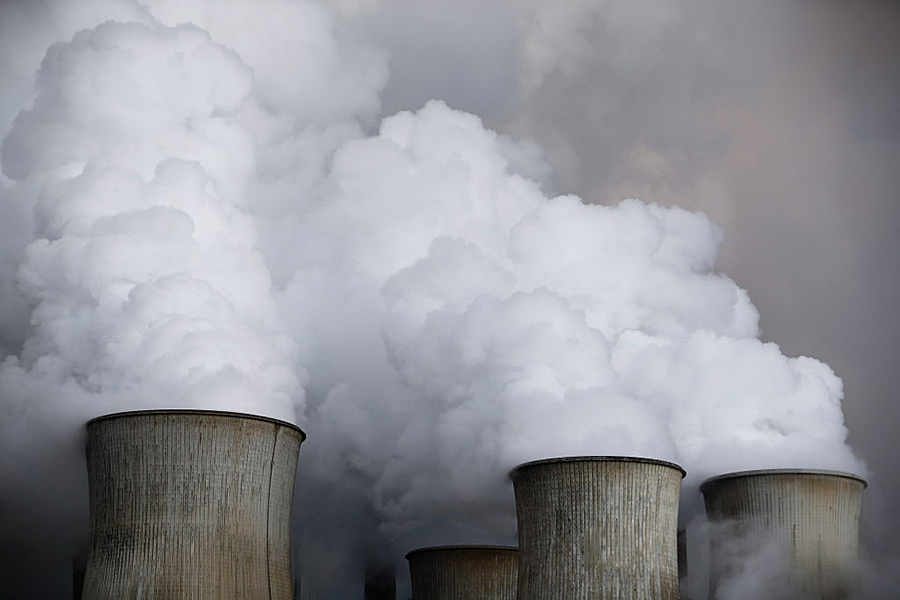Global carbon emissions remain flat three years in a row: Glimmer of hope?
Loading...
Global carbon dioxide emissions have stayed almost flat for the third year in a row, thanks to a decrease in coal consumption by China and the United States, according to a yearly report by an international team of scientists. But the election of coal-friendly Donald Trump as president could threaten this trend.
According to early projections by the Global Carbon Project, carbon dioxide emissions will increase a negligible 0.2 percent in 2016. This slowdown contrasts a 2.3 percent increase each year from 2000 to 2013.
“This third year of almost no growth in emissions is unprecedented at a time of strong economic growth,” Corinne Le Quéré, director of the Tyndall Centre for Climate Change Research at the University of East Anglia, and lead author of the study published in the journal Earth System Science Data, said in a statement.
But, she warns, this reduction alone will not be enough to limit global warming to 2 degrees Celsius (3.6 degrees Fahrenheit) above pre-industrial levels that is part of the Paris climate agreement.
“Global emissions now need to decrease rapidly, not just stop growing,” she added.
The report comes less than a week after the election of Mr. Trump, a climate change denier who has promised to both repeal the US Clean Power Plan and other regulations to curb greenhouse gas emissions and withdraw from the Paris agreement. Yet, the report also comes as China, which contributes 29 percent of global carbon emissions, is expected to further reduce its carbon footprint, and as public opinion globally is making climate change a priority.
The Global Carbon Project, composed of at least 67 scientists, measured how much carbon dioxide humans emitted through available data from energy reports put out by countries. They then accounted for how much carbon dioxide was subsequently absorbed by plants, land surfaces, and oceans. The difference is the amount of carbon dioxide that remains in the atmosphere, driving global warming, according to The Washington Post.
While the authors expect global carbon emissions in 2016 to slow to 0.2 percent, 36 billions tons of carbon dioxide were still expected to have been emitted this year from fossil use and industrial activity. In this case, then, perspective is as important as progress. Emissions today remain “63 percent above emissions in 1990,” the study notes. The authors also did not take into account other greenhouse gases such as methane, or the release of additional carbon dioxide from deforestation and other nonindustrial cases.
Still, progress was made in China, the United States, and the European Union, the world’s three largest carbon dioxide emitters. China saw its carbon dioxide emissions decrease by 0.7 percent in 2015, in part because of its decrease consumption of coal and a shift towards more renewable options, but also because of recent emissions policies. China is forecasted to see an additional 0.5 percent decline in 2016.
The United States, the second largest carbon dioxide emitter (about 15 percent of the world's total), also reduced its coal use while increasing its oil and gas consumption, leading to an overall decrease of 2.6 percent last year.
While the study projects the US will further decrease its emissions by 1.7 percent in 2016, it’s unclear how the policies of President-elect Trump could affect this trend, as The Christian Science Monitor’s Henry Gass wrote.
The implications of Mr. Trump’s presidency on the environment and climate change may remain unclear for months. But some of his statements during the election campaign stand in sharp contrast to a strong consensus among climate scientists that Earth’s temperatures are rising, that this poses major risks to ecosystems and human societies, and that human emissions of heat-trapping gases are the root problem to address.
Besides suggesting that climate change is a Chinese hoax, during his campaign he also pledged to repeal the Clean Power Plan and other regulations curbing greenhouse gas emissions, called for boosting fossil fuel development, and said he will pull the US out of the 195-nation Paris Agreement to reduce carbon emissions.
Still, an overwhelming majority of the public (64 percent) is concerned about global warming, according to Gallup.
The rhetoric of Trump on the campaign trail could inspire more environmental action, according to the Monitor’s Mark Trumbull.
So, yes, Trump may try to follow through on pledges of major support for the fossil fuels, pulling America out of the Paris agreement to reduce carbon emissions, and trying to stop spending federal money on climate change . But it's possible his positions will evolve or be constrained because of public opinion, a divided Senate, diplomatic pressure, or market conditions such as falling costs of renewable power and visible costs of climate change.
This report contains material from Reuters.







